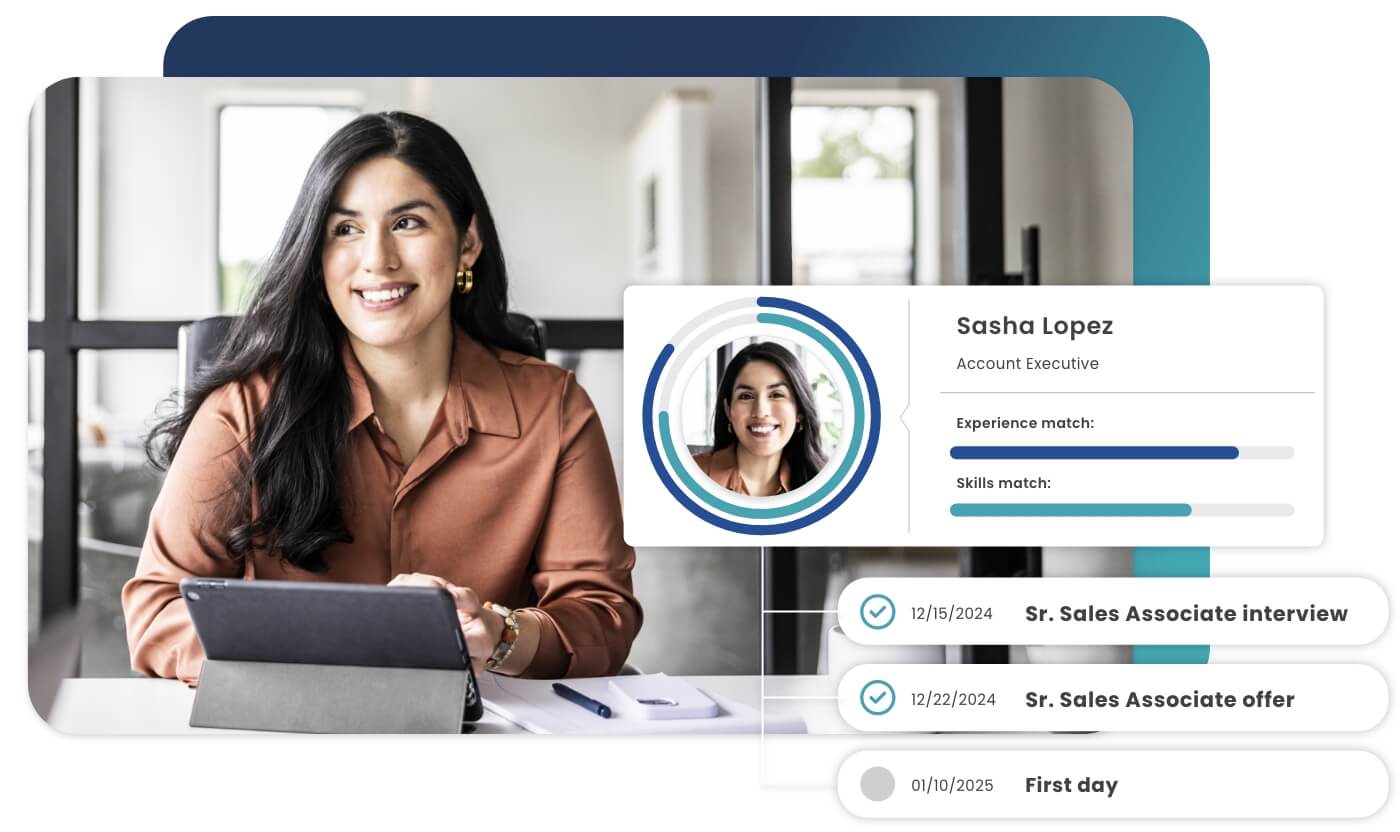

Diversity, equity, and inclusion are no longer just areas of possibility or a “nice-to-have” in the workplace. Instead, DEI is becoming a necessity. It’s proven effective in helping businesses achieve their desired results, including improvements to profits, shareholder value, market share, and innovation through the addition of diverse perspectives. It also allows organizations to reflect the outside world they exist in and work for. For many, having a diverse workforce yields more diverse consumers and customers.
DEI imperatives continue to drive organizations to be more reflective of the larger population, with equitable opportunities for all team members to truly belong and succeed. That said, it is important to acknowledge that even with the progress made, there is still much more work to be done. iCIMS partnered with Talent Board, a nonprofit candidate experience benchmark research organization, to address this issue by surveying talent acquisition and HR professionals globally, gaining their perspective into the diversification of workforces. iCIMS also has complementary research findings on HR professionals and job seeker behavior and expectations on the state of DEI in the workplace today.*
Below are five emerging themes from our recent research, some of which may surprise and fascinate you. To read the full insights and survey findings on DEI imperatives globally from iCIMS’ research with the Talent Board, download the full report, The State of Diversity, Equity and Inclusion in the Workplace, here.
According to a survey of 1,000 adults across the United States, 89% agree that DEI in the workplace is important to them, and 56% shared that they would be more likely to work for an organization that promotes DEI*. That is why, whether it be DEI courses and training, creating goals towards more diverse hires, or establishing employee resource groups (ERGs) to celebrate and understand different cultures, efforts have been put in place to help build a diverse workforce. But are those efforts enough? According to many TA practitioners, HR professionals, and job candidates, they’re not.
Our Class of 2021 research found that 65% of HR professionals were at least somewhat concerned that, despite efforts with trainings, courses, ERGs, and more, their employer still is not doing enough to promote DEI. 46% shared that they are extremely concerned. According to a recent CNBC poll, this concern appears to be justified, as 80% of candidates want to work for an employer committed to building diverse teams and inclusive workplace cultures. This passion towards DEI also comes as no surprise, considering our research with Talent Board also revealed that 58% of Gen Z job seekers are looking for employers who value diversity.
The lesson to be learned here? Never become too comfortable with your efforts, as there is always room for improvement with diversity at your organization, whether you see it or not. Evidently, HR and TA professionals do.
Employers shouldn’t be afraid to show where they are in their journey authentically. Recognizing where you currently stand, your vision for the future, and the work you need to do to reach your company’s goals is crucial. Job seekers will appreciate the transparency and may be interested in joining the journey to push your efforts forward.
Our new research with Talent Board found that 62% of organizations have a designated champion in the hiring process, ensuring that DEI is taken seriously and that these elements implemented throughout the process are conducted effectively. This is a step in the right direction for the majority of employers.
Despite our research finding that nearly 70% of our survey respondents evaluate an employer’s commitment to DEI based on their website*, less encouraging results from the report found that only 19% of respondents say their organization’s career pages contain images of diversity, and even fewer respondents at 14% shared that these career pages contain information on ERGs. Additionally, 14% of respondents say their organization’s career pages have employee testimonials in text or video form, and only 13% say they have a DEI mission statement.
When you evaluate the employees to showcase throughout your career site and even throughout the interview process, are you only considering perceived gender and skin color? Consider showing people of various body types, ages, those with disabilities, veterans, etc.
These numbers demonstrate that, while key opportunities are being leveraged, many still are not, and the onus is on you to put your best foot forward.
If those numbers weren’t enough to show that current DEI efforts are still not sufficient in most workplaces globally, participants shared even more surprising responses, demonstrating that there is plenty of room (and need) for improvement.
Ranking their organization’s overall efforts to recruit diverse talent on a scale between “superb” and disappointing, nearly half (49%) of participants shared that these efforts are “superb” or “excellent.” On the other hand, 45% rated their efforts as “fair” or “okay.” The final 6% of respondents shared that they find their organization’s efforts “disappointing.”
Despite these numbers, a disparity persists; C-suite members rate their organizations 74% higher than recruiters do. Additionally, larger organizations with 100,000+ employees rate their DEI efforts 46% higher than smaller organizations (501 to 2,500 employees), a testament to the fact that larger employers have been better able to make significant investments in DEI.
Is lack of available funding to blame for lack of diversity in smaller workplaces? It can’t be the whole story. Gone are the times when recruiters, hiring managers, or leaders could make an excuse for not having a diverse workforce by saying that the talent doesn’t exist. It does. You must look for the diverse talent where it is. To be more inclusive in your recruiting and hiring, expand how and where you search for candidates. And, if DEI is a business imperative and you know that your company’s success may depend on it, you’ll find the resources to support your efforts.
Slowly but surely, progress is being made at organizations globally toward improving DEI efforts. However, many respondents shared that some areas of diversity are being tracked more than others at their organizations, indicating that metrics, targets, and policies are being significantly underutilized in the workforce.
To make a change and take action against racial injustice and equity issues, business leaders must do their part by putting diversity metrics in place and turning their DEI goals into action. When participants were asked which diversity metrics their organization tracks, 17% responded ethnicity, 17% responded race, 12% responded disability status, 12% responded veteran status, and 9% responded age.
Even more surprising than these significantly low results is that only 3% of organizations track caretaker status and socioeconomic status. Does your organization put their words into actions towards DEI, or are they missing the mark?
Many employers implement specific targets to build accountability, reduce bias, and stay on track to ensure that they foster a diverse workplace and represent diverse groups. 60% of participants shared that their organization has goals to track and measure their DEI journey. And that number only goes up with company size, as 78% of respondents with 100,000+ employees have specific goals, as opposed to 60% of respondents with 501-2,500 employees.
According to HR professionals who work for organizations that have specific DEI goals, not all have metrics in place for underrepresented groups. Here’s a breakdown of the percentage of organizations that track representation for each group:
These figures are disappointingly low, and despite efforts to improve DEI in the workplace, disparities still exist. Based on these responses, it’s no wonder that so many participants rated their organization’s efforts significantly low.
Technology is more than just a medium to assist you in your latest Google search. Instead, you can leverage it at your organization to support DEI efforts, and many employers already have!
Our research found that 48% of respondents felt employers should use technology to reduce the chances of bias or discrimination when reviewing candidates.* According to iCIMS data, 47% of participants have already implemented technology to reduce unconscious bias during both the recruitment and hiring processes. In addition, one-third (33%) of those who have not implemented technology solutions to support these efforts plan to do so in the future.
If you are looking for new ways to enhance DEI efforts at your organization, consider leveraging technology as your next step towards improvement. Technology can assist you in improving DEI targets and move forward in your DEI journey. When used responsibly, artificial intelligence (AI) can offer candidate recommendations based on skills and experience, where the outcome is neither an exclusionary experience nor discriminatory practice. AI is one of the most powerful tools available to promote diversity and help provide a faster, fairer hiring process.
There’s no doubt that employers are becoming more and more aware of DEI in the workplace. However, our data with Talent Board shows that there is still room to nurture DEI in the recruitment and hiring process. Improving DEI in these areas will take time and effort, but it is both a business and moral imperative, and we anticipate the workforce will make significant strides in the coming months and years.

Methodology for the DEI Research Report: The State of Diversity, Equity and Inclusion in the Workplace
Talent Board and iCIMS surveyed talent acquisition and HR professionals working within organizations of all sizes and across a variety of industries. More than 350 anonymous survey responses were collected between May 3 and May 27, 2021.
*Additional data noted with (*) collected through a Dynata poll conducted on behalf of iCIMS. Dynata polled 1,000 adults, age 25+ across the United States via an online survey, between May 17 and May 21, 2021.